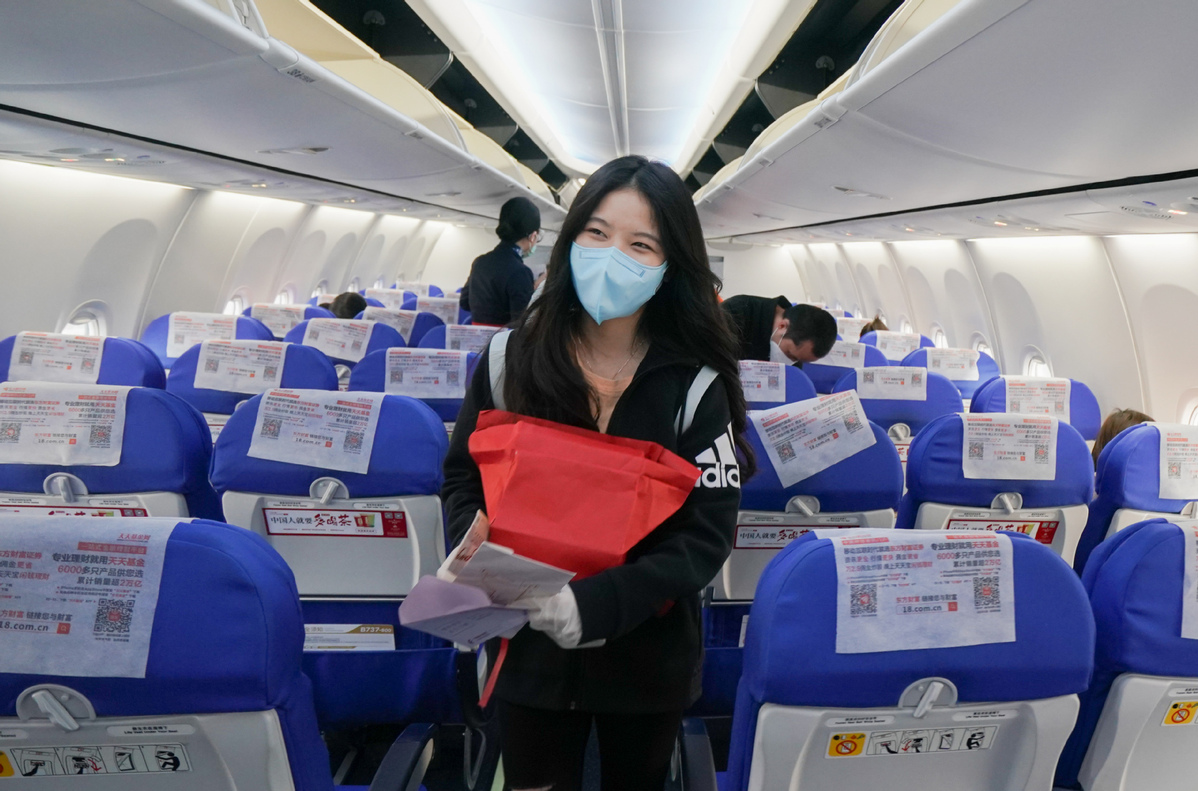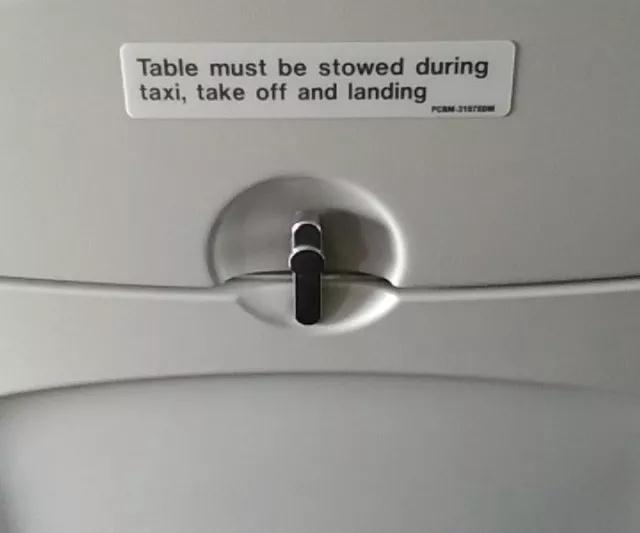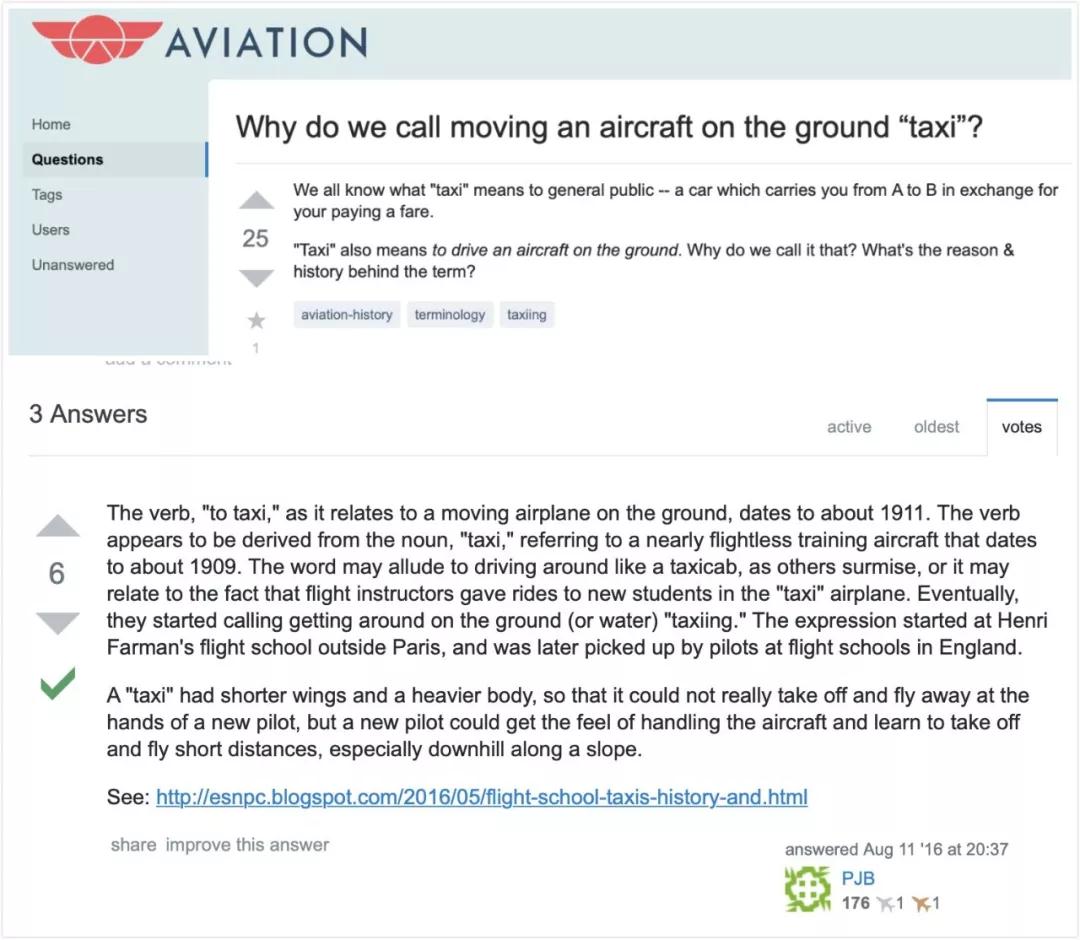大家坐飞机时一定会发现机舱内有很多英文标识。
因为飞机是一种高度标准化的交通工具,不管标识也好、机组人员的操作流程也好,都是全球统一的。

A passenger boards on a plane in Wuhan, Central China's Hubei province, on April 8, 2020. [Photo/Xinhua]
今天主要想跟大家聊聊另外一句英文。我发现有些型号的飞机座位背部有这行英文(通常在小桌板的上方),看照片:

table must be stowed during taxi, take off and landing.
我们坐飞机时是不是经常听到空姐会说:“...我们的飞机马上就要起飞了,请您系好安全带,收起小桌板,…”
上面这句英文的前半句:table must be stowed,就是“请收起小桌板”的意思。stow是一个动词,表示“妥善放置”,英文解释:to put something in a safe place,造句:
She found a seat, stowed her backpack and sat down.
她找到一个座位,把背包放好,坐了下来。
这不是今天的重点,请注意英文句子的后半部分:during taxi, take off and landing.大家有没有发现这个单词:taxi?
take off表示“起飞”,landing表示“着陆”,这两个词比较常见,但taxi…我估计95%的人都会觉得诧异:这不是出租车嘛!
下面我们就福尔福斯附体一下,做一个简单推理:
首先,你可以根据句式来判断,during表示“在…之时”,而take off(起飞)、landing(着陆) 都是飞机的两种姿态,那么作为并列成分的taxi一定也是描述飞机的某种姿态。
另外,你想想,飞机从启动引擎到最后着陆,一共会经历几种姿态?无非这么几个嘛:滑行、起飞、平稳飞行、降落、着陆…
我们可以做个排除法,take off已经指“起飞”、而“降落”和“着陆”是一个完整的过程,可以用landing来表示。而且,飞机平稳飞行时,小桌板是不用收起来的。
所以taxi最有可能的含义就是“滑行”。
好,福尔摩斯的部分到此结束,下面,我们用词典验证一下推理得对不对:

牛津词典截图
正如词典所示,taxi有两种词性。
做名词时,就是我们非常熟悉的“出租车”。在美国某些地区,“出租车”也叫cab,其实无论taxi还是cab都来自同一个词:taxicab(出租车),这是完整说法。
当taxi做动词时,意思为:
(of a plane) to move slowly along the ground before taking off or after landing
(飞机)在起飞前或着陆后,在地面上缓慢移动。
因为taxi是一个动词,所以有各种形式的变化:
1)第三人称单数两种写法都行:taxis, taxies
2)现在分词、动名词形式:taxiing
3)过去分词:taxied
比如:
After waiting for twenty minutes, the plane finally taxied and took off.
等了20分钟之后,飞机终于滑行并起飞。
看到这里,我相信跟我一样爱思考的孩子一定想问:
为什么taxi既可以表示“出租车”,又可以表示“飞机滑行”?为什么两个意思的差距这么大?
我在网上搜了半天,终于在国外某个的航空论坛上找到了一个相对靠谱的答案:

航空论坛截图
The verb, "to taxi," as it relates to a moving airplane on the ground, dates to about 1911. The verb appears to be derived from the noun, "taxi," referring to a nearly flightless training aircraft that dates to about 1909. The word may allude to driving around like a taxicab, as others surmise, or it may relate to the fact that flight instructors gave rides to new students in the "taxi" airplane. Eventually, they started calling getting around on the ground (or water) "taxiing." The expression started at Henri Farman's flight school outside Paris, and was later picked up by pilots at flight schools in England.
date to:追溯到
be derived from:来源于
flightless training aircraft:不能飞的教练机
allude to:暗示、暗指
surmise: vt.推测
flight instructors:飞行教练
这段的大意是说,“to taxi”表示“飞机滑行”的意思可以回溯到1911年。该动词似乎源自于名词“taxi”,在大约1909年,该词开始指代“不能飞的教练机”,因为这种教练机在地面滑行的姿态就像出租车。
另外,教练机里的飞行教练(flight instructors)是给新学员驾驶飞机的,这就有点像出租车司机载着乘客了,所以那时学员就把“开飞机在地上跑”称为“taxiing”。
巴黎郊外的亨利·法尔曼飞行学校(Henri Farman's flight school)首先使用这个说法,后来被英国飞行学校的飞行员拿去用了。
可以说,taxi表示“飞机滑行”的含义,跟飞机的历史一样悠久。
本文已获授权,如需转载请与原作者联系。

(来源:微信公众号“侃英语” 编辑:yaning)